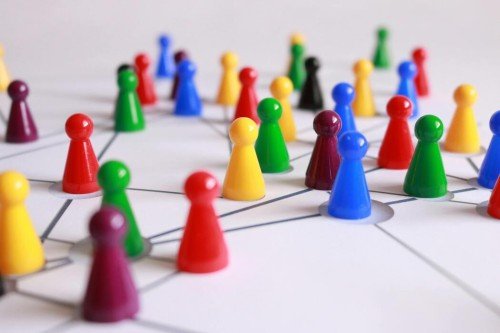
Most of us use the internet every day without giving much thought to how it actually works. We send messages, share photos, stream videos, and conduct business with the simple click of a button. But beneath the surface lies a vast, complex infrastructure and increasingly, decentralized networks are becoming the invisible highways that power much of the digital world.
While the term decentralization may sound technical, the concept is surprisingly intuitive. Instead of relying on a single authority to control and verify information, decentralized networks distribute that responsibility across many participants. This model is transforming how we communicate, transact, and even build communities online.
What Is a Decentralized Network?
At its core, a decentralized network is one where no single server or entity has complete control. Instead, the system is spread across multiple nodes (computers or participants) that work together to validate and share data.
-
Traditional model: Centralized platforms like social media sites or banks hold and control all the information.
-
Decentralized model: Power is distributed, meaning no single point of failure and no monopolistic gatekeeper.
Think of it like a highway system: in centralized systems, all cars are funneled through one toll booth, creating bottlenecks and control issues. In decentralized systems, multiple entry and exit points allow for smoother, more resilient traffic.
Why Decentralization Matters
The appeal of decentralized networks lies in their resilience and fairness.
-
Security: Attacking one server in a decentralized system doesn’t compromise the entire network.
-
Censorship resistance: No single authority can silence or restrict participants.
-
Transparency: Transactions and data are validated collectively, making manipulation harder.
-
Efficiency: Workloads are shared, often improving performance and uptime.
These benefits make decentralized systems especially valuable in areas like finance, supply chains, and communications.
Blockchain as the Poster Child
While decentralization exists in many forms (like peer-to-peer file sharing), blockchain has brought the concept to mainstream attention. Each transaction is verified by multiple nodes and then recorded on a shared ledger, ensuring accuracy without relying on a central bank or authority.
This isn’t limited to money. Smart contracts, decentralized applications (dApps), and decentralized finance (DeFi) all use the same principles to create ecosystems without middlemen.
Everyday Examples of Decentralization
You may already be benefiting from decentralized networks without realizing it:
-
Cryptocurrencies: Bitcoin and Ethereum operate on global decentralized networks.
-
File sharing: Services like BitTorrent distribute files across many users.
-
Cloud alternatives: Decentralized storage solutions like IPFS or Filecoin reduce reliance on massive corporate data centers.
-
Communication: Emerging platforms use peer-to-peer models to secure chats and calls.
These examples show that decentralization isn’t abstract, it’s quietly shaping the apps and systems we use daily.
The Human Element
While decentralized technology is powerful, adoption always depends on people. For networks to thrive, users must contribute their computing power, validate transactions, or participate in governance.
This “many hands” approach is what makes decentralization robust. It mirrors the way societies distribute responsibility, relying on collaboration rather than top-down authority.
Challenges of Decentralized Networks
Decentralization isn’t a silver bullet. It comes with hurdles:
-
Scalability: Processing large numbers of transactions quickly remains a challenge.
-
Usability: Interfaces are often complex, discouraging mainstream adoption.
-
Coordination: Reaching consensus without central authority can be slow or contentious.
-
Regulation: Governments struggle to adapt policies to systems without clear ownership.
The future of decentralized networks depends on overcoming these issues while keeping their core values intact.
Global Reach and Cultural Barriers
One of decentralization’s promises is inclusivity: allowing people across the globe to participate in finance, trade, and communication without traditional barriers. But cultural and linguistic differences can complicate adoption.
That’s why companies entering global markets often rely on business translation services to make their platforms accessible. Whether it’s explaining how to use a decentralized wallet or localizing smart contract terms, clear communication across languages is essential for trust and adoption.
By bridging language gaps, business translation services help ensure decentralized technologies truly achieve their mission of being borderless and universal.
Lessons for the Future
Decentralized networks teach us an important lesson: resilience comes from distribution, and trust can be built without centralization. As these systems mature, they may transform not just industries, but the very way we structure society online.
-
Finance may no longer require traditional banks.
-
Information may flow without reliance on tech giants.
-
Communities may self-govern, free from centralized oversight.
These shifts won’t happen overnight, but the foundations are already in place.
The Highway We Don’t See
Decentralized networks are like the invisible highways of the digital world. We may not see the mechanics, but they carry the weight of our data, money, and interactions. By distributing trust and responsibility, they open new possibilities for fairness, resilience, and innovation.
Just as the internet once reshaped how we live and work, decentralized systems are poised to redefine the next era of digital life. And while challenges remain, their momentum is undeniable. In the end, decentralization isn’t just about technology, it’s about reimagining how humans connect, collaborate, and create value across the globe.
Recent Posts

Networks and Medical Translati...

Cómo cada participante mantie...

Usi sorprendenti della blockch...

Blockchain et l’avenir de la...

How Blockchain Is Rewiring Tru...
Share it.
Categories
Links
© Copyright 2022 Salilkan Here


